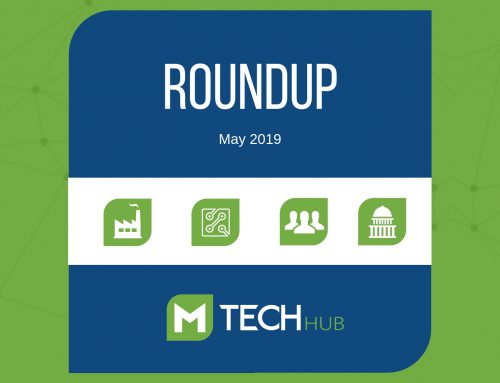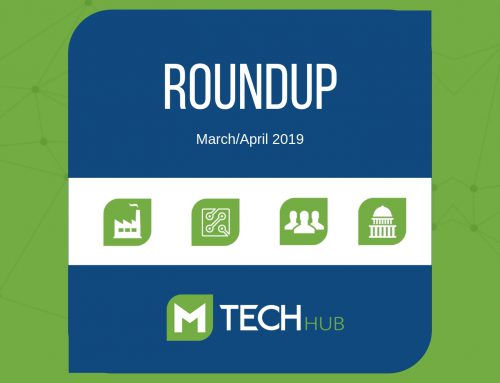This blog series is posted once a month and focuses on the following: Manufacturing Technology and Innovation, IoT, Industry 4.0, Cluster development and other relevant trends and topics of importance to Small to Medium-sized manufacturers.
This month we’ve hand picked articles that reflect on the current state digital adoption in manufacturing. What technologies are leading the way and how can you develop a success strategy for digital adoption?
On the Verge: Blockchain in Manufacturing
According to a recent ReportLinker report, the blockchain in manufacturing market is expected to see growth at an annual compounded rate of 80% between the year 2020 and 2025, reaching $566 Million in the U.S. Though a Deloitte survey this year shows that the majority manufacturing executive teams see the value of blockchain technologies, and just short of half experimenting with development, the current climate in the sector around regulation and a lack of clear standards, is holding back immediate growth. In Ana Alexandre’s article Report: Blockchain in Manufacturing Market will be Worth $500 Million by 2025, she also links the slower adoption of blockchain to the slump in manufacturing caused by the 2008 recession – combined losses that are expected to be regained in 2019.
Everything Old is New Again: Embedded RFID
Radio Frequency Identification (RFID) has been around for a long time, but with the rapid adoption of emerging sensory tech solutions in the race to Industry 4.0, embedded RFID may be a good fit to a digital transformation strategy. In Making the Decision to Embed RFID, Robert Oberle cites the many benefits and downstream value of embedded RFID at the manufacturing stage, including stronger security and asset recovery capabilities, more information storage and accessibility and location asset tracking out-of-the-box. In general, RFID tags are proven tough and independent of outside energy sources. For businesses manufacturing high priced assets, the decision to embed RFID benefits the manufacturer, the supply chain and the end customer/user which should be evaluated against any cost/benefit decision.
It Takes a Village: Avoiding Failure with Your IoT Strategy
In 5 Reasons Your IoT Strategy May Fail (And How You Can Save It), Mimi Spier outlines the pitfalls of an IoT strategy, and the importance of considering the needs and capabilities of a larger ecosystem, including customers, suppliers, technology vendors, industry organizations and partners, to support successful implementation. The main considerations to avoid failure are ensuring that your IoT strategy is founded in business reality and tightly integrated with an execution plan, is adaptable to the existing culture, capabilities and processes of your organization, recognizes the value of the right data from the right sources at the right time, and makes agility a core competency of the plan. Creating a culture that embraces experimentation, is dedicated to focused execution and involves all of the process stakeholders, will lead to a successful strategy.
RELATED: IIoT: Shifting Mindsets and Models






